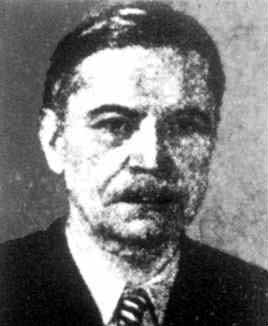<Back to Index>
- Mathematician Yurii Dmitrievich Sokolov, 1896
- Writer Edmond Louis Antoine Huot de Goncourt, 1822
- President of Mexico Adolfo López Mateos, 1910
PAGE SPONSOR

Yurii Dmitrievich Sokolov (Russian: Ю́рий Дми́триевич Соколо́в; May 26, 1896 – February 2, 1971) was a Soviet mathematician.
Sokolov was born on May 26, 1896 in Labinskaya Stanitsa (now Labinsk), Russia. He studied at Kiev Institute of Peoples Education and graduated in 1921. He taught at the Applied Mathematics Division of the Academy. He completed his PhD from Kiev University. His doctorate advisor was Dmitry Grave. His doctorate thesis was in the area of mechanics of particles.
After completing his PhD, Sokolov taught at the Institute of Mathematics at the National Academy of Sciences of Ukraine. He also taught at many other institutions in Kiev.
Sokolov died on February 2, 1971 in Kiev, Ukraine, USSR. Sokolov did research on the n-body problem for nearly 50 years. He summarized his work in the 1951 book Singular trajectories of a system of free material points (Russian).
He did research on functional equations and on such practical problems as the filtration of groundwater. He also did research on celestial mechanics and hydromechanics. Sokolov
is also known for 'the averaging method with functional corrections' or
'the Sokolov method'. This method is for finding approximate solutions
to differential and integral equations. Sokolov wrote the book The method of averaging of functional corrections (1967),
in which he summarizes this important work. He wrote the book at an
elementary level. The first part of the book discusses applications of
his
method to problems which can be modelled by linear integral equations
with constant limits. A number of different sufficient conditions for
the approximations to converge and error estimates were given.
The next three parts of the book examine the problems which can be
modelled by nonlinear integral equations with constant limits and
extend the analysis to the situation where the upper limit is
variable. In the final part of the book, Sokolov's methods to integral
equations of mixed type are examined. He also presents some
generalizations of the method in a number of appendices.